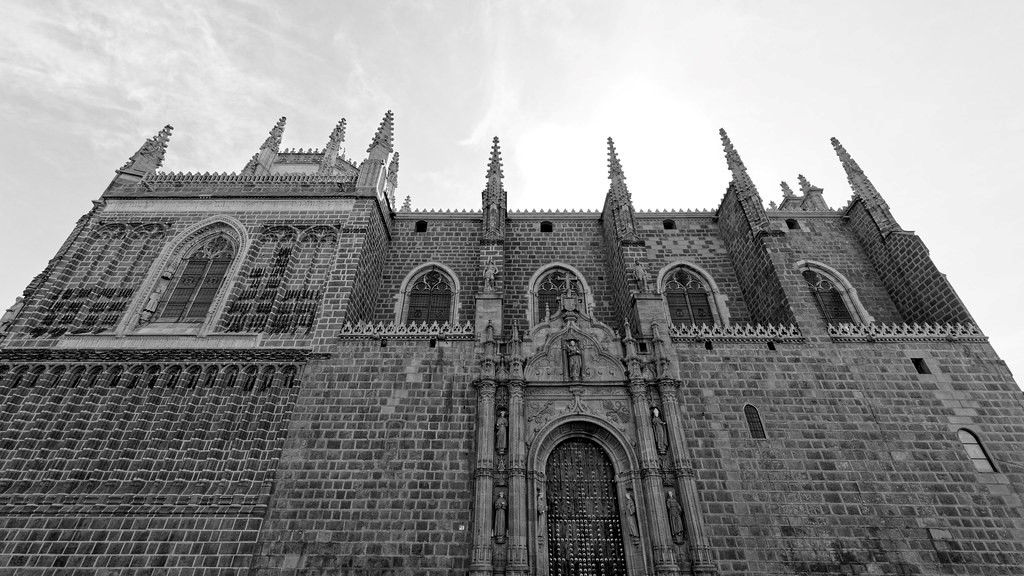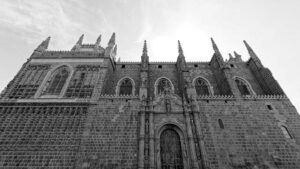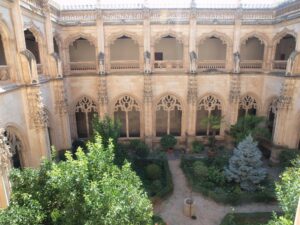
23 Sep San Juan de los Reyes: A Commemoration of Triumph & History
The historic city of Toledo, Spain is a hotspot for travel, filled to the brim with hundreds of monuments, numerous museums paying homage to artistic works of old, and large collections of religious structures that weave against the narrow, cobblestone streets. While the town was unassuming at one point in time, it became a significant focal point, playing a pivotal role in the development of Spain as a country. Not only was it the main location for the court of Charles I but it also was home to the peaceful co-existence between Jewish, Christian, and Muslim cultures. While the presence of mosques, churches, and synagogues marks Toledo as a religious center, is it the San Juan de los Reyes monastery that reminds us of the power, might, and triumph of the Catholic Monarchs.
What is the Historical Significance of San Juan de los Reyes?
The Monasterio de San Juan de Los Reyes, better known as the Monastery of Saint John in English or just the San Juan de los Reyes monastery, was founded in the 15th century by the Catholic Monarchs and is one of the main religious buildings (alongside the Toledo Cathedral) in Toledo. Located in the west of the city center in the Jewish quarter, you can find the monastery after the crossing of Puente de San Martin, a 40 meter (132 feet) stone bridge that links the Toledo old town sector and carries individuals over the Tagus River. Originally, the monastery was intended to be a mausoleum of kings and was built under the orders of King Ferdinand II of Aragon and Queen Isabella I of Castile as a commemoration of their triumph at the Battle of Toro. The Battle of Toro was fought between the monarchs (Ferdinand & Isabella) and Alfonso V of Portugal. The win secured the crown of Castile for Isabella. The construction of San Juan de los Reyes began in 1477 after the battle and was finished in 1504, 27 years later.

Fachada San Juan de los Reyes Toledo
What to Look for at San Juan de Los Reyes?
The monastery is a popular tourist attraction due to its elaborate and imposing structure. Known for its two-level cloister, elongated nave, and tranquil garden, there are many architectural highlights to look out for on your visit.
- The main attraction is the two-level cloister. Both levels are accessible. The cloister is extremely large, has twenty arches (five per side), and opens up into the center garden. The lower cloister was built as a continuation of the church and is characterized by arches. The upper cloister gives a fantastic view of the garden and has a ceiling made out of wood. The Catholic Monarch Coat of Arms is painted on the ceiling, which creates a beautiful and very unique pattern. The cloister features both Gothic and Mudejar elements, including animal and floral motifs, biblical figures and ornate pinnacles, columns, and intricate gargoyles.
- The courtyard garden features fruit-laden trees (orange) and rose bushes.
- While the church was damaged during Napoleon’s invasion, it was restored, and the nave remains a fantastic section to see. It is covered in rib vaults, has a star-shaped dome over the presbytery, and lateral chapels between the buttresses. It is also home to the Catholic Monarch Coat of Arms and has ogee arches which are beautiful to stare up at.

Claustro
If you are planning on visiting the San Juan de Les Reyes, you may be wondering where you can store your luggage for the duration of your trip, as lugging around an entire suitcase or backpack to any popular tourist destination, is not ideal. Toledo Lockers can help you there; specifically designed for tourists who want luggage storage on a rent-by-reservation basis, they allow you to conveniently and safely store your luggage while you stay in Toledo. The locker rental is self-service and can be accessed without limitations. Book online for when you plan to travel and access it when you get there! Drop off your luggage and go!



No Comments